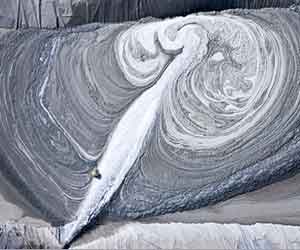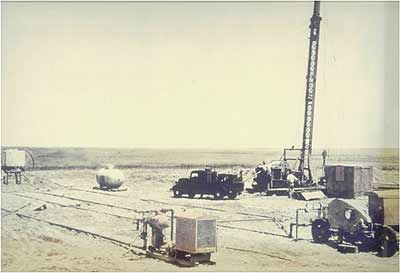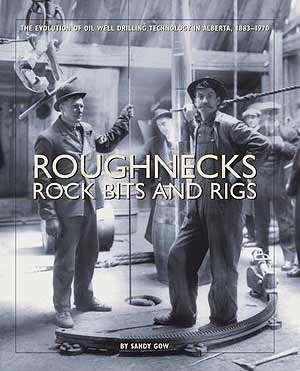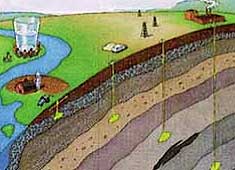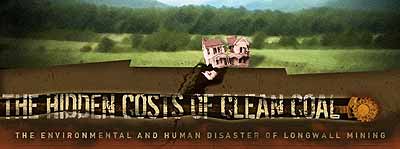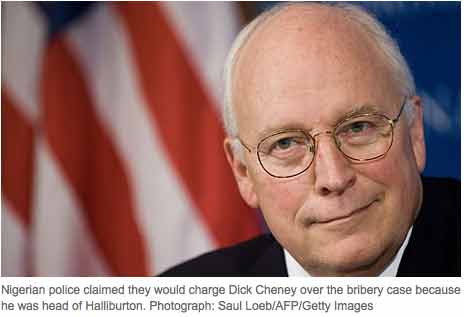Biblio
Elizabeth Larkin, Cortland County Clerk. You can search Land Records at the Cortland County Clerk's Office online and read the full-text of lease documents and see if your neighbors have already signed gas leases.
Instructions
Click "Search Land Records". On the next page, just click "Log In", you do not need a password. On the next page, click "I accept".
On the next page, uncheck "Ignore party type when search for name"; change the dates if you wish, choose "Document Type: Lease" from the drop-down menu.
Next to the field that says "Town", use the pull-down menu to pull down your town and then click the search button at the top right of the page. You can also try variations.
...The fate of bills before Congress related to regulation of hydraulic fracturing is critically important. Congress exempted hydraulic fracturing from regulation under the Safe Drinking Water Act in 2005, but a bill was introduced last summer to federally regulate hydraulic fracturing under the act.
Regulations developed by the EPA under such a bill are unknowable at this time, but they could be expensive. Congress continues to debate the need for broader regulation and has asked the EPA to study the impacts of hydraulic fracturing on drinking water sources.
The industry needs a better, more effective way to advocate and communicate the benefits of fracturing to media, to the public, and to officials whose decisions could impact the future of the technology — and of the nation’s efforts to achieve energy independence.
Claude Cooke. "Industry responds to public take on hydraulic fracturing." Hart Energy E & P. Mar. 1, 2010.
See: Tom Hamburger and Jim Puzzanghera. "Obama a business booster in Chamber of Commerce speech." LA Times. Feb. 7, 2011.
President Obama seeks fresh start with the U.S. Chamber of Commerce, with whom he has had a prickly relationship.
Obama sought to distinguish between inefficient government regulation of the kind he raised in his State of the Union speech — over things like salmon — and a more legitimate government role in areas such as the environment.
"Even as we work to eliminate burdensome regulations, America's businesses have a responsibility to recognize that there are some safeguards and standards that are necessary to protect the American people from harm or exploitation," he said Monday. "Few of us would want to live in a society without the rules that keep our air and water clean … yet when standards like these have been proposed, opponents have often warned that they would be an assault on business and free enterprise."
The audience welcomed Obama with a standing ovation and laughed politely when he joked they "would have gotten off on a better foot if I had brought over a fruitcake when we first moved in."
But there was little hearty applause, and after the president shook a few hands and walked back to the White House, Chamber members were guarded in their reviews of his message.
See: Pollution in Your Community
See: Draft Plan to Study the Potential Impacts of Hydraulic Fracturing on Drinking Water Resources
See: Pew Environment Group (PEG) Factsheet: Industry Opposition to Government Regulation (PDF), October 14, 2010.
The Day After Tomorrow, (available 2/8/2011) takes readers on a journey to bear witness to the environmental destruction that is currently plaguing our planet; from a forest in West Virginia devastated by mountaintop removal mining, to a region in Florida left in ruins by the phosphate mining industry, J. Henry Fair presents hard evidence that our unchecked consumerism is leading the way in the destruction of our planet, one natural resource at a time.
Overspray of drilling slurry at hydro-fracing drill site. Waste pit of drilling mud (byproduct from mining operations including rock debris, drill bit lubricants, and possibly residual radioactive material.)
The type of waste being produced indicates that exploration is still in progress. The overspray at the top is a violation and a danger to any water bodies downhill.
Photographer J Henry Fair is best known for his Industrial Scars series, in which he researches our world's most egregious environmental disasters and creates images that are simultaneously stunning and horrifying.
Ted Williams. Audubon. Jan/Feb. 2010. "Incite".
"...So deficient is the draft that it drew sharp criticism even from the laconic U.S. Environmental Protection Agency. The EPA says the draft ignores or glosses over: cumulative impacts, threats to the Catskill reservoirs that supply nine million people in and around New York City with untreated drinking water, maintenance of wastewater pits, threats to air quality, health risks of frack-water flowback, impacts on aquatic ecosystems from water withdrawals, and dangers to Important Bird Areas, which sustain all the forest-interior birds threatened by ongoing fragmentation in Pennsylvania."
WHAT YOU CAN DO
To follow Marcellus gas development and learn how to help control it, go to these websites: PennFUTURE, ConserveLand.org, Pinchot Institute for Conservation, and Penn State College of Agricultural Science’s Cooperative Extension.
Opens with a great critique of the word "sustainability".
We followed a trail of yellow liquid draining from the back of the site downstream past a neighboring industrial bakery and into the Edison Glen and Edison Woods residential developments.
There we videotaped a child playing in the poisoned stream who told us it was a good place to hang out and look for frogs and turtles. I subsequently found out that the vacant Superfund lot was a playground for local children, the chemical lagoons were their wading pools, and adults routinely scavenged materials from the site.
Bob [Spiegel] called the Environmental Protection Agency (EPA) and when their response seemed to be limited to posting a few warning signs, he and his friend rented a movie theatre and showed their videotapes to increasingly agitated crowds. “We scared the hell out of everybody,” Spiegel says. The EPA immediately scheduled a public meeting.
--Molly Ivins’ Bushwhacked (Chapter 3)
New Jersey non-profit that among other activities, helps citizens engage in and advocate for the environmental well-being of their communities.
See: How to apply.
Fig. 1—In 1947, Stanolind Oil conducted the first experimental fracturing in the Hugoton field located in southwestern Kansas. The treatment utilized napalm (gelled gasoline) and sand from the Arkansas River.
Since Stanolind Oil introduced hydraulic fracturing in 1949, close to 2.5 million fracture treatments have been performed worldwide. Some believe that approximately 60% of all wells drilled today are fractured. Fracture stimulation not only increases the production rate, but it is credited with adding to reserves—9 billion bbl of oil and more than 700 Tscf of gas added since 1949 to US reserves alone—which otherwise would have been uneconomical to develop.
In addition, through accelerating production, net present value of reserves has increased. Fracturing can be traced to the 1860s, when liquid (and later, solidified) nitroglycerin (NG) was used to stimulate shallow, hard rock wells in Pennsylvania, New York, Kentucky, and West Virginia. Although extremely hazardous, and often used illegally, NG was spectacularly successful for oil well “shooting.” The object of shooting a well was to break up, or rubblize, the oil-bearing formation to increase both initial flow and ultimate recovery of oil. This same fracturing principle was soon applied with equal effectiveness to water and gas wells.
In the 1930s, the idea of injecting a nonexplosive fluid (acid) into the ground to stimulate a well began to be tried. The “pressure parting” phenomenon was recognized in well-acidizing operations as a means of creating a fracture that would not close completely because of acid etching. This would leave a flow channel to the well and enhance productivity. The phenomenon was confirmed in the field, not only with acid treatments, but also during water injection and squeeze-cementing operations.
But it was not until Floyd Farris of Stanolind Oil and Gas Corporation (Amoco) performed an in-depth study to establish a relationship between observed well performance and treatment pressures that “formation breakdown” during acidizing, water injection, and squeeze cementing became better understood. From this work, Farris conceived the idea of hydraulically fracturing a formation to enhance production from oil and gas wells.
Fig. 2—On 17 March, 1949, Halliburton conducted the first two commercial fracturing treatments in Stephens County, Oklahoma, and Archer County, Texas.
See: Carl T. Montgomery and Michael B. Smith. "Hydraulic Fracturing: History of an Enduring Technology." Journal of Petroleum Technology (JPT). 2010. (PDF 2.1 MB)
At the 2006 SPE Annual Technical Conference and Exhibition (ATCE), SPE honored nine pioneers of the hydraulic fracturing industry as Legends of Hydraulic Fracturing. Claude E. Cooke Jr., Francis E. Dollarhide, Jacques L. Elbel, C. Robert Fast, Robert R. Hannah, Larry J. Harrington, Thomas K. Perkins, Mike Prats, and H.K. van Poollen were recognized as instrumental in developing new technologies and contributing to the advancement of the field through their roles as researchers, consultants, instructors, and authors of groundbreaking journal articles.
This CD includes more than 150 papers published by these industry legends; it also includes an overview of the history of hydraulic fracturing, along with personal reflections from a number of the Legends and their colleagues.
Hydrafrac (1946)
See: Search for hydrafrac on Google Scholar.
See: Gow, Sandy, and Bonar Alexander Gow. Roughnecks, rock bits and rigs: the evolution of oil well drilling technology in Alberta, 1883-1970. University of Calgary Press, 2005. Web.
This book is a comprehensive study of the evolution of the component aspects of drilling technology in Alberta, from the evolution of power sources and drill bit designs to the composition of drilling muds and the use of fishing tools. Included are explanations of the costs and risks of oil well drilling and of the larger issue of industrial technology -- how it evolves and under what conditions. The author draws extensively from original source material such as interviews, photographs, and appendices from both the Glenbow Archives and the Devon-Leduc Petroleum Hall of Fame and Interpretive Centre.
The Stanolind patent (1946), p. 268, was the first patent issued for hydraulic fracturing. You may preview this page by clicking on the snippet in the link I've provided.
See: George C. Howard. "Well Completion Process." Stanolind Oil and Gas Company. Tulsa, OK. June 29, 1949. U.S. Patent number: 2667224, Filing date: Jun 29, 1949, Issue date: Jan 1954.
See also: Erle P. Halliburton. "Method and Apparatus for Drilling Wells, Such As Oil Wells." New Wilson, OK. U.S. Patent number: 1703234, Filing date: Nov 4, 1920, Issue date: Feb 1929.
See: Google Labs Books Ngram Viewer of the historical usage of the term "hydraulic fracturing". Try the word frack or fracking.
- Threats to water quality
- Inadequate regulation of hydraulic fracturing (including the Halliburton loophole)
- Hydraulic fracturing 101
- More facts, news, other information
Hydraulic fracturing is a common technique used to stimulate the production of oil and natural gas. Typically, fluids are injected underground at high pressures, the formations fracture, and the oil or gas flows more freely out of the formation. Some of the injected fluids remain trapped underground.
A number of these fluids, such as diesel fuel, qualify as hazardous materials and carcinogens, and are toxic enough to contaminate groundwater resources. Read more details in the Oil and Gas Accontability Project's (OGAP) basic primer on hydraulic fracturing.
Washington, D.C. based environmental advocacy group. Website includes link to video, Fracking and the Environment: Natural Gas Drilling, Hydraulic Fracturing and Water Contamination, from Democracy Now! It includes an interview with ProPublica's Abrahm Lustgarten. 9/3/09.
Summary Points:
EPA’s central authority to protect drinking water is drawn from the Safe Drinking Water Act (SDWA).
The SDWA requires EPA to set legal limits on the levels of certain contaminants in drinking water.
The Safe Drinking Water Act (SDWA) also requires EPA to protect underground sources of drinking water (USDWs) from contamination caused by underground injection.
-
§1421 provides minimum standards for underground injection.
-
§1422 provides for state primary enforcement authority.
-
§1425 provides for alternative showing of effectiveness of program by state Underground Injection Control (UIC) Programs (Oil and Gas wells only).
-
§1431 contains provisions to address imminent and substantial endangerment.
Activities not regulated under Safe Drinking Water Act (SDWA) Provisions for UIC (Sections 1421, 1422, and 1425).
-
Oil and gas production activities.
-
Hydraulic fracturing (except use of diesel) per 2005 Energy Policy Act.
-
Natural gas storage.
States may choose to regulate these activities.
Surface water discharges are regulated under the Clean Water Act (CWA).
See: Safe Drinking Water Act (SDWA) | Safe Drinking Water Act | US EPA
See: Coalbed Methane Development: The Costs and Benefits of an Emerging Energy Resource
See: WATER | Safe Drinking Water Act - Wikipedia, the free encyclopedia
On 9-15-10, attending the EPA meeting on hydraulic fracturing for shale gas, professor of ecology and environmental biology, independent scientist Robert Howarth, Ph.D.,

told a news conference that natural gas extracted from shale is nearly as dirty as coal or perhaps even dirtier in terms of greenhouse gas footprint...
good grief:
...Our public comment to EPA was, in part, as follows:
Based on what we know so far, the EPA should order immediate suspension of high-volume hydrofracking until your study is complete. Let science guide policy. Otherwise we’re conducting a massive human, animal and earth experiment.
The gas will be there; it's not going away. Ideally any further carbon extraction at all should be banned while we accelerate development of sustainables but since that's probably not in the cards politically, it's imperative we at least do everything we can to reduce the harm we are doing to ourselves and our environment by extending our carbon binge in shale gas extraction. As others have mentioned,
I especially urge you to incorporate into your study the research of Prof. Robert Howarth and his team at Cornell on the methane greenhouse footprint that makes shale gas look nearly as dirty as coal if not even worse.
"Who the Heck is Calvin Tillman?"
"...Texas allows public domain seizure for pipelines. The many pipelines feeding the compressors cross private property rendering it unfit for future development.
The cumulative effect of the gas industry on the residents and their property values has caused Calvin, their mayor, to refer to Dish as a Sacrifice Zone.
Pennsylvania based blog. Includes many links and articles.
- About the writer
- Informational Links
- Listening Projects, Video and Stories
- Maps and Images
- More Blogs
- Take Action!
Updated frequently.
Blogroll links to
Categories include:
- Drilling in NY (28)
- Drilling in other places (26)
- drilling in pa (167)
See: Dish Mayor Calvin Tilman Testifies at Railroad Commission - Oil and Gas Lawyer Blog.
Evidence that Pennsylvania’s Department of Homeland Security is working on behalf of the natural gas industry came to light in early September when internal department bulletins were leaked to an anti-drilling listserve. The department had contracted an Israeli-linked agency to spy on anti-drilling activists.
The story was later leaked to reporters at Pro Publica and the City Paper. These papers’ articles suggested a direct connection between the state agency and the natural gas industry. The exposure fueled outrage from targeted groups.
Gov. Ed Rendell had to retreat. On Sept. 14, he held a press conference to apologize to groups who had been monitored. “Protesting is not a threat, it’s an American right,” said Rendell. He said he was “appalled” and announced that the state would not renew its $125,000 no-bid contract with the Institute of Terrorism Research and Response, set to expire in October.
See: Pa. Governor Apologizes for Tracking Enviro Extremists, but Questions Remain - ProPublica
Perched on an Alaskan barrier island, the village of Kivalina faces imminent destruction because of melting sea ice.
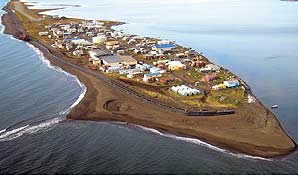
Kivalina, Alaska, has sued energy companies over
melting sea ice that threatens the town.
AP Photo/Northwest Arctic Borough
Now, the community's legal effort — which pins the blame on energy companies for the change in climate — is in danger as well. So, too, is a pair of high-profile climate-change suits that may be taken up by the U.S. Supreme Court, one involving an effort by Connecticut and other states to reduce greenhouse-gas emissions, the other stemming from Hurricane Katrina.
See: Greenhouse Gas Emissions Case Heads to Supreme Court.
See: SCOTUS (Supreme Court of the United States) Blog.
All three suits rely upon the theory that climate change is a public nuisance and, therefore, state and local governments, as well as individuals who have been harmed, can sue for damages or injunctions. The Obama administration, in a recently filed brief in the Connecticut case, American Electric Power v. Connecticut, is arguing that it may not be prudent for the high court to allow these types of cases to go forward.
If the justices grant review, the stage could be set for reversal of a rare, recent high court victory for environmentalists, the 2007 decision in Massachusetts v. Environmental Protection Agency. The 5-4 ruling in the Massachusetts case found a special standing to sue for states that brought that first global-warming case to the Supreme Court. The majority also held that the Environmental Protection Agency (EPA) had authority under the Clean Air Act to regulate greenhouse-gas emissions.
"If the solicitor general gets the Court to take cert, I would be very confident they're going to undercut Massachusetts v. EPA," said environmental scholar Randall Abate of Florida A&M University College of Law. "The sooner the Court gets to revisit it, the more likely it will be gutted. The trend has been to be more restrictive on standing. This is really making the environmental community nervous and angry."
The Katrina-related case — In re Ned Comer — is also at the Supreme Court but is coming to justices in an unusual fashion — through a petition for a writ of mandamus. The Alaska case — Native Village of Kivalina v. Exxon Mobil Corp. — is undergoing briefing in the U.S. Court of Appeals for the 9th Circuit.
 "Each case has its legal strong points and each has its legal vulnerabilities," said James May of Widener University School of Law, who has filed amicus briefs on behalf of environmental law professors in the Connecticut and Kivalina cases.
"Each case has its legal strong points and each has its legal vulnerabilities," said James May of Widener University School of Law, who has filed amicus briefs on behalf of environmental law professors in the Connecticut and Kivalina cases.
"As a federal litigator for 15 years and a law professor for 20, what I find concerning is the executive branch stepping in front of states and private litigants who are trying to get their day in court. If this was the Bush administration doing this, I think it would be a very divisive political issue."
...The energy companies' case is now stronger because of the EPA's actions and the solicitor general's brief, he said. "I don't know if it gets you there finally. If I was writing plaintiffs' briefs, I would be pounding the table and saying, `If you're telling me this is a political question, the political arm to deal with this is Congress and they have done nothing.' "
 Which is exactly what Pawa, who represents three land trusts in the Connecticut case as well as the Kivalina villagers, said. "The solicitor general's brief is not very damaging because it was unpersuasive," Pawa said. "It's just wrong. It tries to repackage the political-question doctrine, which was thoroughly dealt with on its merits by the 2d Circuit, as prudential standing.
Which is exactly what Pawa, who represents three land trusts in the Connecticut case as well as the Kivalina villagers, said. "The solicitor general's brief is not very damaging because it was unpersuasive," Pawa said. "It's just wrong. It tries to repackage the political-question doctrine, which was thoroughly dealt with on its merits by the 2d Circuit, as prudential standing.
"And, there are no federal regulations applicable to existing coal-fired power plants. They haven't even been proposed. There have been some rules proposed for new plants, but no rules for existing plants, which are at issue in these lawsuits."
In looking at the various iterations of climate-change litigation, the most "evolved" of the three cases is Kivalina, according to Jones and others, and the one that worried most corporate defendants. "It contained a conspiracy count, which is what the plaintiffs' bar hoped would get them money damages," Jones said. "And it has more sympathetic and real plaintiffs than the other cases. Here you have a particular village that is going to be under water."
Kivalina from Cristina Valdivieso + Jon Connor on Vimeo.
Various scientific and government studies report that the right combination of storms could flood the entire village at any time and have recommended relocation at costs varying up to $400 million.
If the Court does not act on Connecticut or Comer, Jones said, "I think Kivalina will go forward. I think that one could end up being the most dangerous of any of them. But getting into court is one thing; proving causation is a very hard row to hoe."
See: Shearer, Christine. "My Journey Into Kivalina v. ExxonMobil et al." Countercurrents. Dec. 1, 2010.
See also: Shearer, Christine. Kivalina: A Climate Change Story. Haymarket Books, 2011. Print.
The Center for Public Integrity’s year-long investigation into the social and environmental impacts of longwall mining centered on hundreds of pages of documents obtained from government sources, such as the Pennsylvania Department of Environmental Protection and the U.S. Fish and Wildlife Service; legal agreements between coal companies and property owners; environmental studies; landowner letters; and federal and state records requests.
The library features key documents exemplifying key people or issues in each of the project’s magazine articles.
See: Resources Page:
This list of resources includes the websites of coal companies and citizens groups, as well as studies about and lawsuits over the impacts of longwall mining.
Fear about environmental damage from Marcellus Shale natural gas drilling is often trained on what could happen deep underground, but some of the gravest hazards posed by the process are driven in trucks, stored in tanks, carried through hoses and left in surface pits at natural gas well sites.
Concentrated chemicals, as well as wastewater containing toxic levels of salts and metals, are stored, produced or transported in large quantities at each well site, creating the potential for tainting drinking water or seeping into ponds and streams.
While recent enforcement action against Cabot Oil and Gas Corp. - the company deemed responsible for methane leaks and nearly two dozen spills in Susquehanna County in the last two years - has drawn attention to the danger of spills, information about the industry-wide frequency and impact has not been reported publicly.
See: Cabot Oil & Gas’s Marcellus Drilling to Slow After PA Environment Officials Order Wells Closed, Lustgarten, Abrahm . ProPublica. (2010.
See: Commonwealth of Pennsylvania DEP takes aggressive enforcement action against Cabot Oil.
Founded in 1919, Halliburton is one of the world's largest providers of products and services to the oil and gas industry. It employs more than 50,000 people in nearly 70 countries."
See: Halliburton's web site on Hydraulic Fracturing
See: Soucewatch article on Halliburton.
"Halliburton is under Justice Department Securities and Exchange Commission investigation over allegations of improper dealings in Iraq, Kuwait and Nigeria," Whitley Strieber wrote March 12, 2007.
See New York time Editorial on the "Halliburton Loophole". (2009)
See LA Times, "Halliburton's Interests Assisted by White House." (2004)
See. John Collins Rudolf. "E.P.A. Subpoenas Halliburton on Fracking." NYT Green Blog. Nov. 9, 2010.
See: Barry Meier and Clifford Krauss. "Inquiry Puts Halliburton in a Familiar Hot Seat". NYT Business Day. October 28, 2010.
See: Dauda Garuba. "Halliburton, Bribes and the Deceit of 'Zero-Tolerance' for Corruption in Nigeria." African Community of Practice on Managing for Development Results. (cop-mfdr-africa.org). August 26, 2010.
EPA Update. November 9-10 2010
On November 9, 2010, EPA announced that eight out of the nine hydraulic fracturing companies that received voluntary information requests in September agreed to submit timely and complete information to help the Agency conduct its study on hydraulic fracturing. However, the ninth company, Halliburton, has failed to provide EPA the information necessary to move forward with this important study. As a result, and as part of EPA's effort to move forward as quickly as possible, today EPA issued a subpoena to the company requiring submission of the requested information that has yet to be provided.
See: Letter sent by EPA to Halliburton PDF (2pp, 516K).
See: The subpoena sent by EPA to Halliburton PDF (11pp, 3.5M).
Update:
See: FCPA Blog | UK Court Won't Block Telser Extradition
Judson Berger. "Nigeria Drops Bribery Charges Against Cheney, Halliburton After $250M Deal Struck." Canada Free Press. Dec. 21, 2010.
Nigeria’s government has reportedly dropped bribery charges against former Vice President Dick Cheney and Halliburton, the energy firm he once headed, after the company agreed to pay a hefty settlement.









